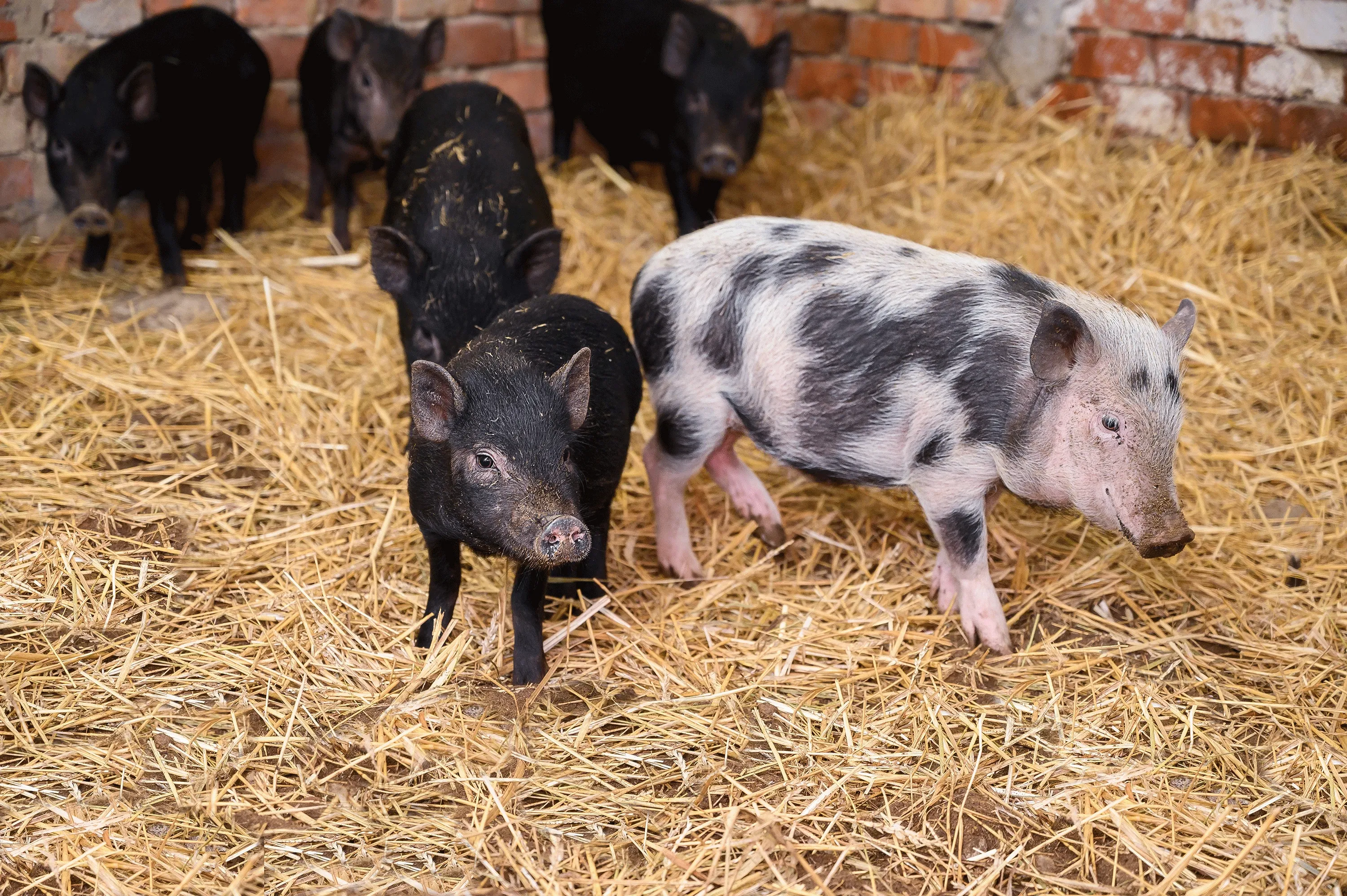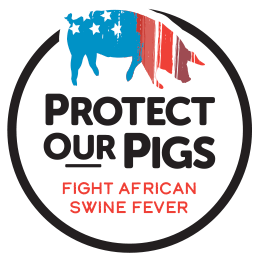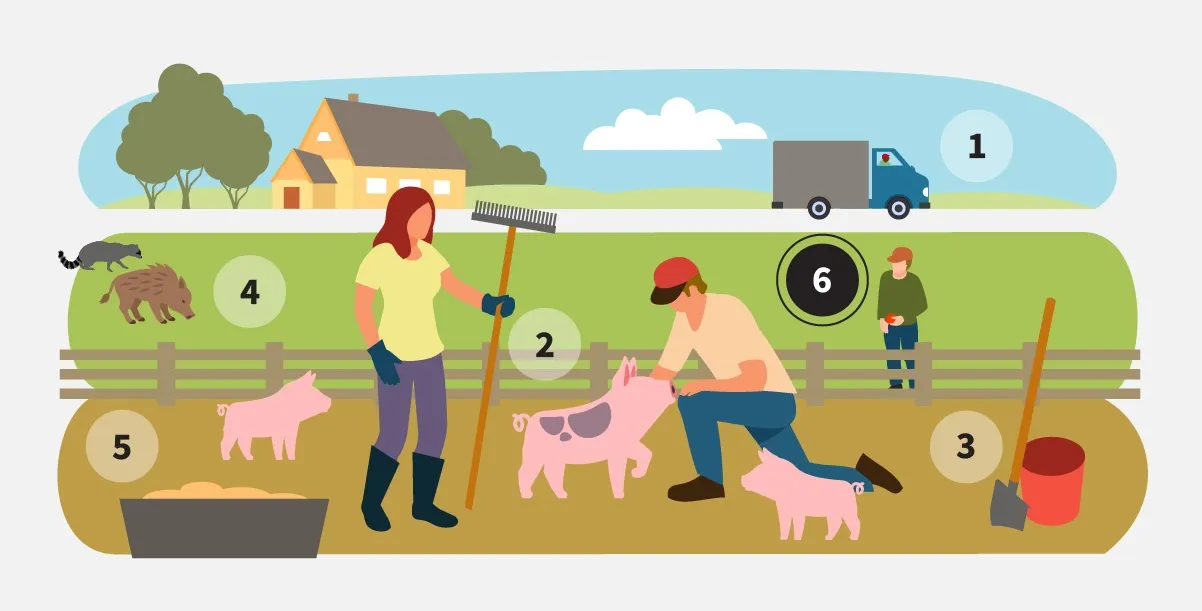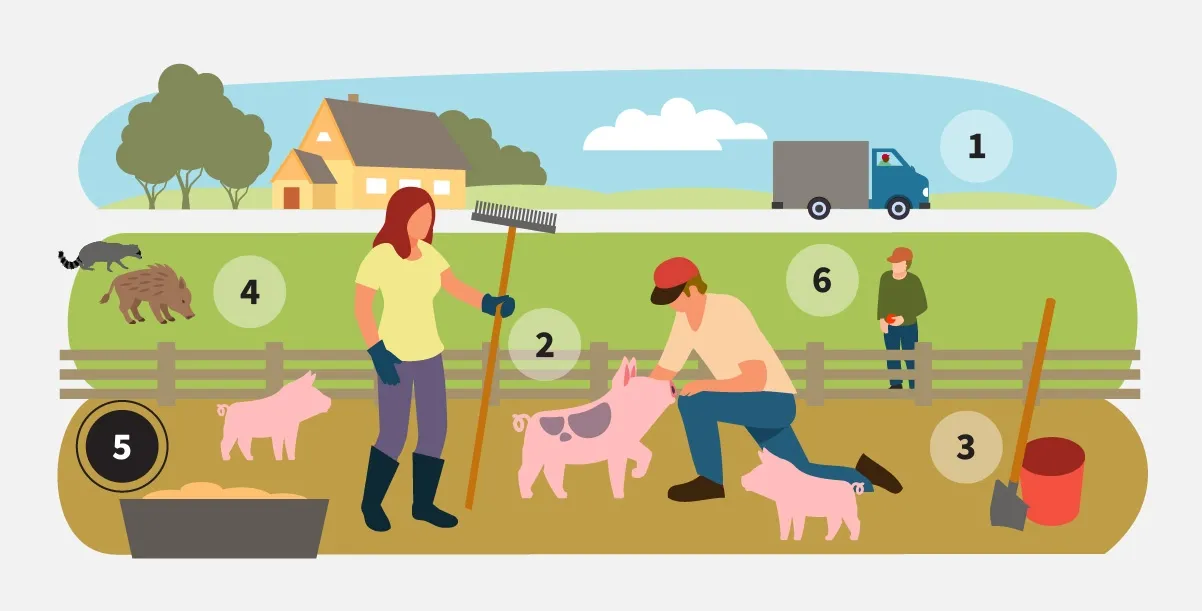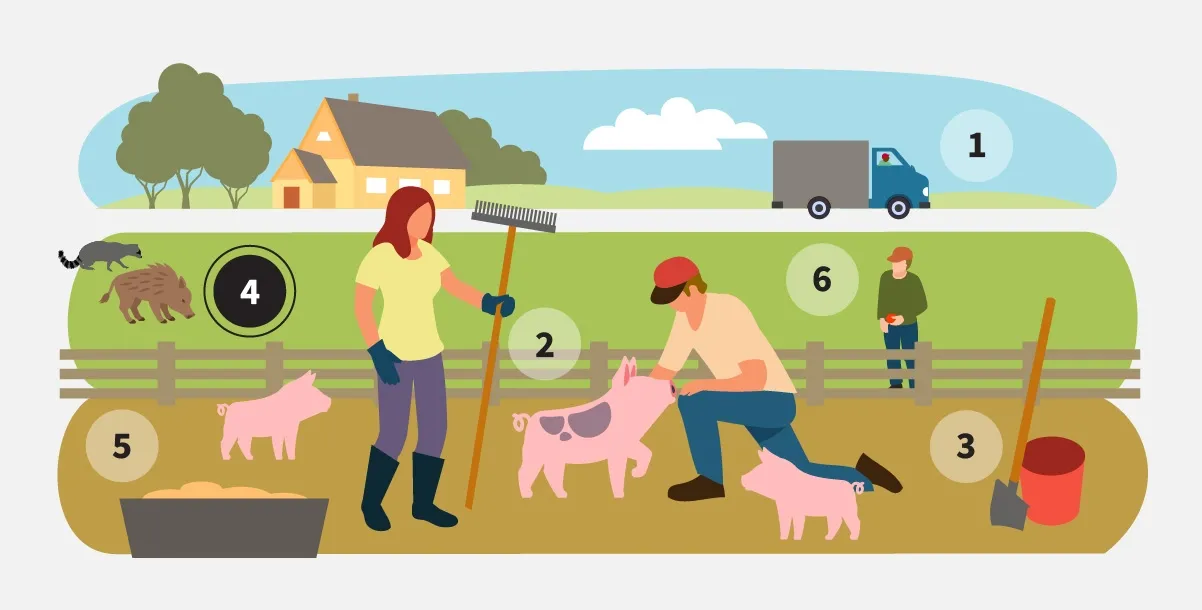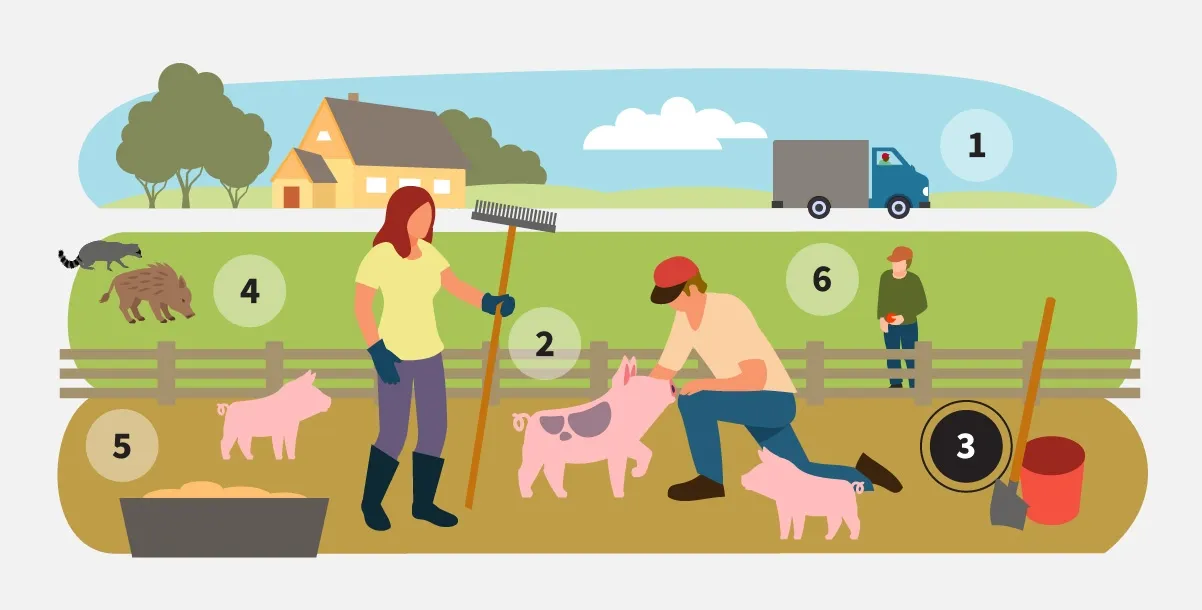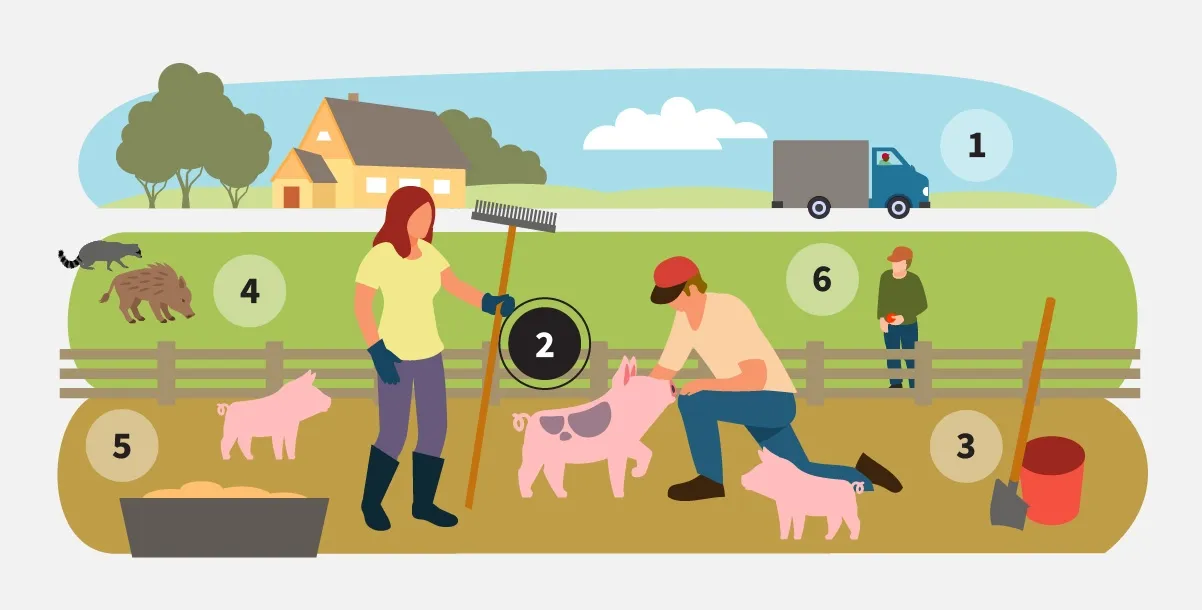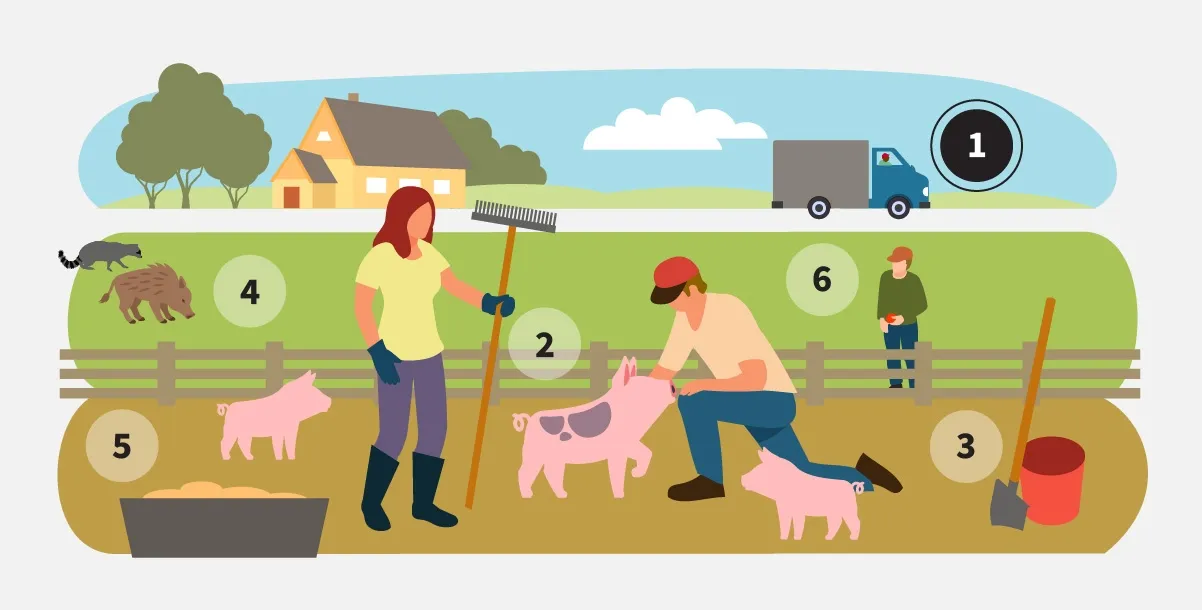The highly contagious and deadly African swine fever spreads rapidly and affects domestic and wild swine. Just one pig with African swine fever can wipe out every pig in the area. Owners of small farms with pigs, homesteads, or companion animals can take basic steps to protect their pigs.
How Transmission Can Occur
Although people cannot get African swine fever, they can carry it on clothing, shoes, and equipment. Sources of the infection include garbage feeding, contaminated personnel, equipment and vehicles, contaminated feed, or water, infected domestic or wild pigs, soft ticks, stable flies and semen. The most common sources of transmission include:
Direct contact occurs when healthy pigs have contact with infected domestic or wild swine or come in contact with infected saliva, urine, feces, or aerosolized respiratory secretions via coughing or sneezing.
Indirect transmission happens when healthy pigs eat virus-contaminated feed, pork products, or come into contact with the virus on clothing, shoes, equipment, vehicles, or food waste.
This occurs when a soft tick acts as a vector, feeding on infected pigs and spreading the virus to healthy swine. Other insects like stable flies, leeches, and swine lice may also spread it.
6 Key Prevention Steps
The wolf is at the door. Global movement of people and pigs increases the health risks to U.S. swine. Taking these immediate steps protects your pigs and the nation’s herd from this deadly disease.
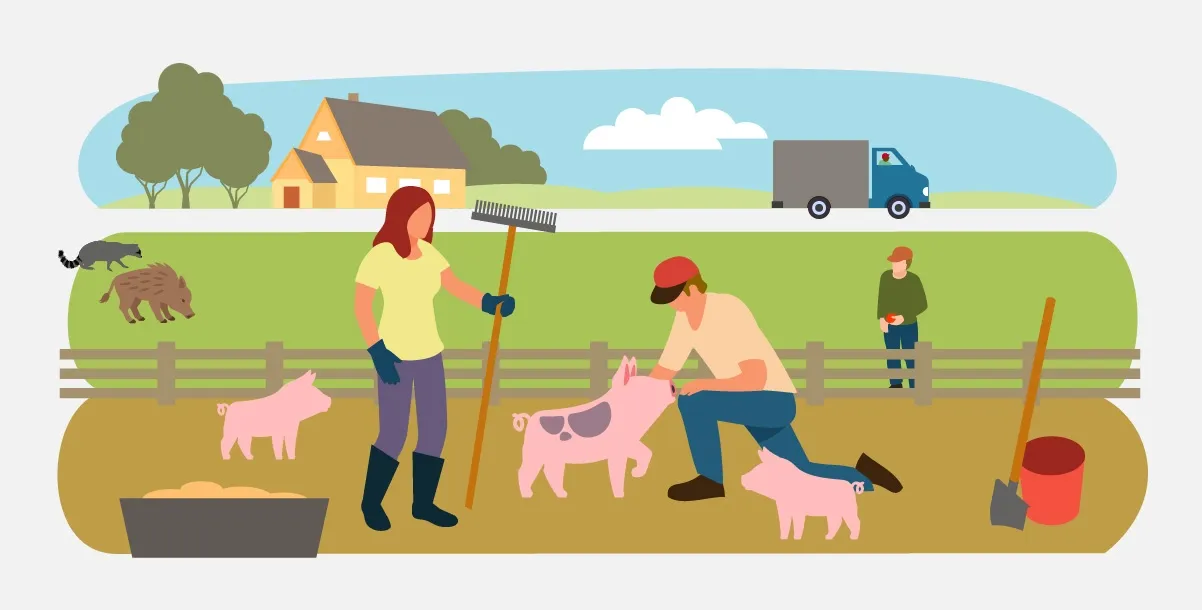
Step 1 Step 2 Step 3 Step 4 Step 5 Step 6
Download Prevention Steps
English (307.04 KB) | Español (204.86 KB)
Know the Signs
To protect our pigs from African swine fever, you must be alert to the signs of this deadly virus:
Report Any Signs

Immediately report animals with any signs to State or Federal animal health officials or call USDA for appropriate testing and investigation.
Call USDA at 1-866-536-7593


